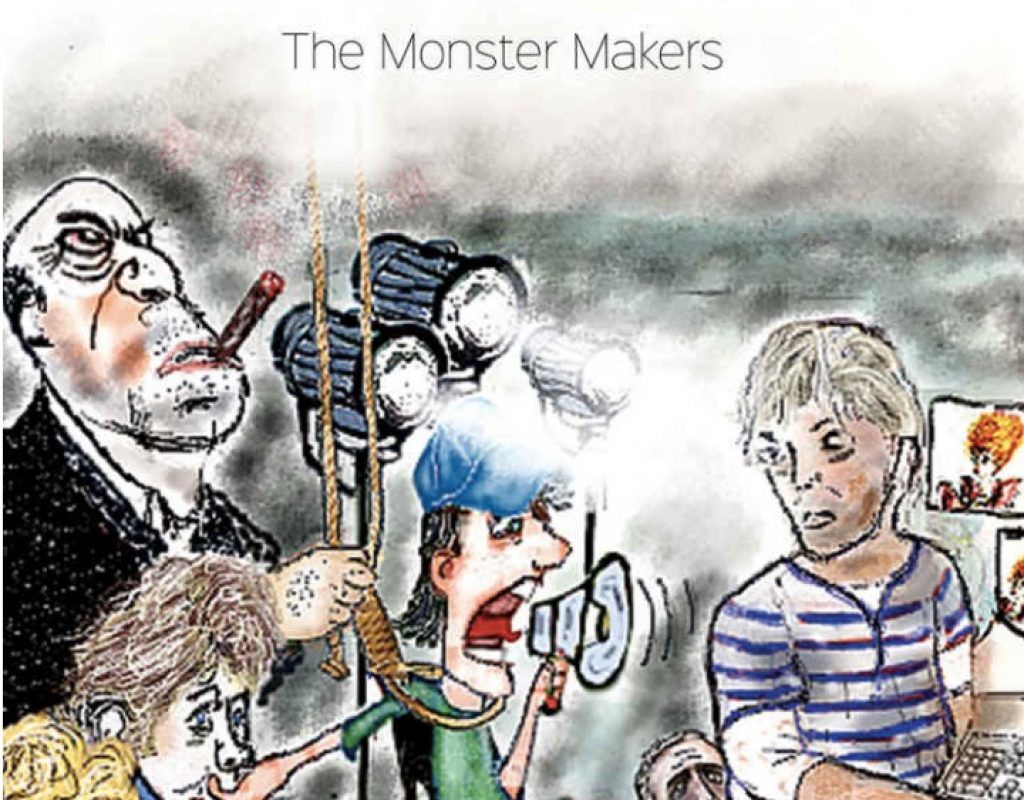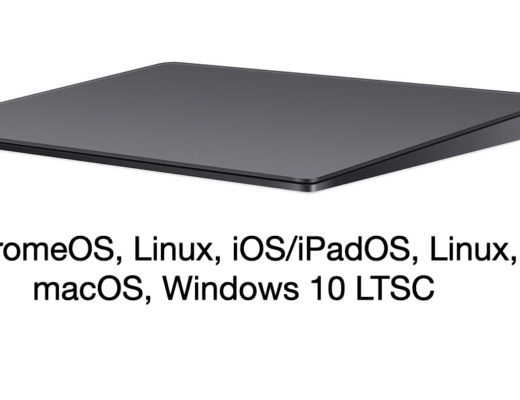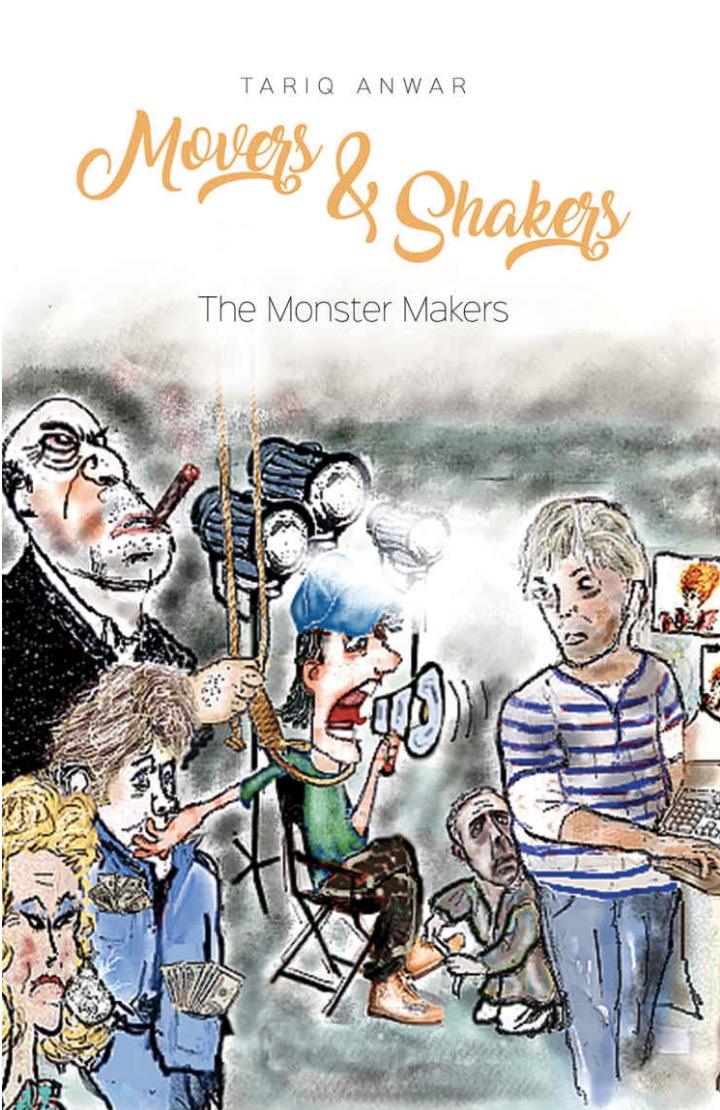 Tariq Anwar was born in New Delhi, India, and grew up in London. At the beginning of his career, in the early 1970s, he worked as an editor at the BBC. That time included editing a whole range of programmes: News, Documentaries, Light Entertainment and on several BAFTA nominated drama productions. His feature film work includes American Beauty, for which he was nominated for an Oscar for editing and an ACE Eddie. He also cut The King’s Speech, which was similarly nominated for an Oscar, a BAFTA and an Eddie for best editing.
Tariq Anwar was born in New Delhi, India, and grew up in London. At the beginning of his career, in the early 1970s, he worked as an editor at the BBC. That time included editing a whole range of programmes: News, Documentaries, Light Entertainment and on several BAFTA nominated drama productions. His feature film work includes American Beauty, for which he was nominated for an Oscar for editing and an ACE Eddie. He also cut The King’s Speech, which was similarly nominated for an Oscar, a BAFTA and an Eddie for best editing.
He has edited with some of the world’s top directors including Mike Newell, Franco Zeffirelli, Nick Hytner, Sam Mendes, Danny Boyle, and Robert De Niro.
Anwar’s other films include Madness of King George, The Lady in the Van, Revolutionary Road, Law Abiding Citizen and The Good Shepherd. We didn’t discuss his latest film, but instead covered his whole career, since he just published an autobiography of his life in filmmaking, called “Movers and Shakers, the Monster Makers.”
(This interview was transcribed with SpeedScriber. Thanks to Martin Baker at Digital Heaven)
HULLFISH: From reading your book, it seems like you maybe spoke your mind a bit more than you should have in your early career. How has your attitude towards directors and producers and notes changed as you’ve matured?
ANWAR: Actually, when you’re younger and you’re starting off in your career, self- preservation is a brake on speaking your mind. You’ve got to think about continuity of work so you don’t want to upset people but I think as you get older the temptation is to speak your mind more freely.
HULLFISH: More freely?
ANWAR: Yes, and just live with the consequences. Some directors react badly, being verbally defensive or possibly going into a sulk at being challenged. Then, of course, the cutting room atmosphere can be unpleasant. Others appreciate an honest opinion, even if it’s contrary to what they believe. There’s a greater respect as a result of that. I really envy editors who consistently work with the same directors, because they have a comfortable environment to work in an environment of expressing opinion without fear of damaging relationships or being fired.
With a new director, there is that awkward phase at the very beginning where you’re trying to figure out the parameters: what you can say, and what you can’t say. As I get older I suppose I’m less guarded about expressing what I really think. It’s very hard to hide one’s feelings when forced to make edits knowing how bad they will be or to put up with a hierarchical structure which enables boorish behaviour. Sometimes you just can’t sit there and nod your head like a parcel shelf dog when your real inclinations are to snarl and snap. With age, the firewall between thought and speech is lost.
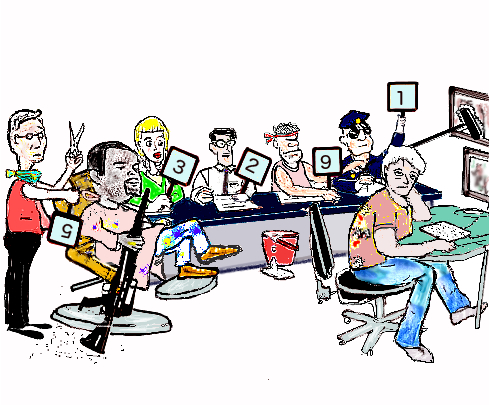
HULLFISH: Why did you write your book?
ANWAR: Back in 2002, it started off as a film script, loosely based on my experiences on the film, The Four Feathers. As I wrote it, I started to incorporate moments from other productions; the characters then becoming an amalgam of other characters. I finished the script but found little interest in developing it as a film. Then in 2016 I resurrected part of the script and reworked it into an autobiography.
The catalyst for writing in both cases – in 2002 and 2016 – was being fired. And in both cases, I thought I was being made a scapegoat for the inadequacies of others. Writing about it was incredibly therapeutic. In particular, writing about it in a satirical way. Finding humor in unpleasant situations – I found it quite cathartic. The script part allowed me to caricature real people like Harvey Weinstein (Walter Weisman in the book) and gave me the license to exaggerate events (ADR session/Previews) and create new ones (TV show/Weisman’s encounter with spider), partly for parody and partly to avoid litigation. My fear was that the autobiographic part was just a bit too dull and dry on its own and needed light relief. The idea of caricature then led to the drawings to support the text.
HULLFISH: Did you do the illustrations?
ANWAR: Yes, all but one. My assistant on Lady in the Van, Katrina Annan, drew the cartoon depicting ‘being let go’ by producers Christine Vachon and Elizabeth Karlsen. Not being an artist, I found GIMP software very helpful.
HULLFISH: There’s a funny scene with the editor being forced to direct an ADR session in the director’s stead.
https://www.youtube.com/watch?v=PhZpjqFuzqY
ANWAR: That scene was based on Tea with Mussolini when Franco Zefferelli the director didn’t want to handle the ADR session. The corset incident is taken from Wings of a Dove and the long rant at the end of the scene drawing on a film called Leo, where Denis Hopper tried to articulate his displeasure at doing ADR.
HULLFISH: I watched a video of you talking about cutting American Beauty.
You mentioned that you temped with Meet Joe Black and that Thomas Newman’s score was quite close to the temp in the end. Can you talk to me about your feelings about editing with temp music?
ANWAR: Ever since I was a very junior editor, I’ve always liked working with music. Not only does it help with emotion, rhythm and tone, it can also inform the picture cutting. Before production (having read the script) and during production I load in music I think might work and generally start experimenting when I’ve assembled a few scenes, either for bridging purposes or internally, within a scene.
I love using sound with pictures in the same way. I think working with all three during assembly is so important. I don’t see them as separate entities at all. The first assembly I show a director has a complete soundtrack: music, atmospheres, spot effects, foleys. With a new director, it’s as well to discuss how you like to work in case they have an aversion to hearing anything other than the production sound but I’ve found that most are quite receptive.
HULLFISH: I read somewhere the classical pieces in King’s Speech originated as temp.
https://www.youtube.com/watch?v=zxew7HJS_Zo
ANWAR: With King’s Speech – for George VI’s wartime speech – I had difficulty finding something that would work. I was struggling with building the scene and thought music would help. I was listening to some CDs with contemporary scores hoping to find something suitable and by luck came across a 1997 film, Photographing Fairies. I skipped through most of it but then paused on Beethoven’s Seventh Symphony. Listening, it just seemed to build in the right way. I dropped it into the assembly, re-editing it to fit and it just brought the whole thing alive.
The use of classical music seemed to be the right approach, so for the post-speech sequence I tried a piano concerto, also Beethoven. Then the Mozart Concerto for Clarinet helped me through a time-passing montage sequence. Both Tom (Hooper) the director and composer Alexandre Desplat were both happy not to replace the pieces.
HULLFISH: And American Beauty?
ANWAR: On American Beauty, Sam Mendes had already decided on Thomas Newman, so we had a library of Newman tracks to work with as temp : Shawshank Redemption, Meet Joe Black, Unstrung Heroes etc. The only non-Newman track in the cutting copy was Carl Orff’s Gassenhauer, used at the beginning of the film. His final score mirrored the temp but only much better.
HULLFISH: With temp score, do you try to stick with the same composer, if you know who the composer is going to be?
ANWAR: If the composer has already been chosen, I think it’s only diplomatic to try their music first, from their earlier scores.
HULLFISH: From the days when you were actually cutting on film, are there any disciplines or skills that have translated well into the digital age? Something that makes you better because you had the experience of cutting film?
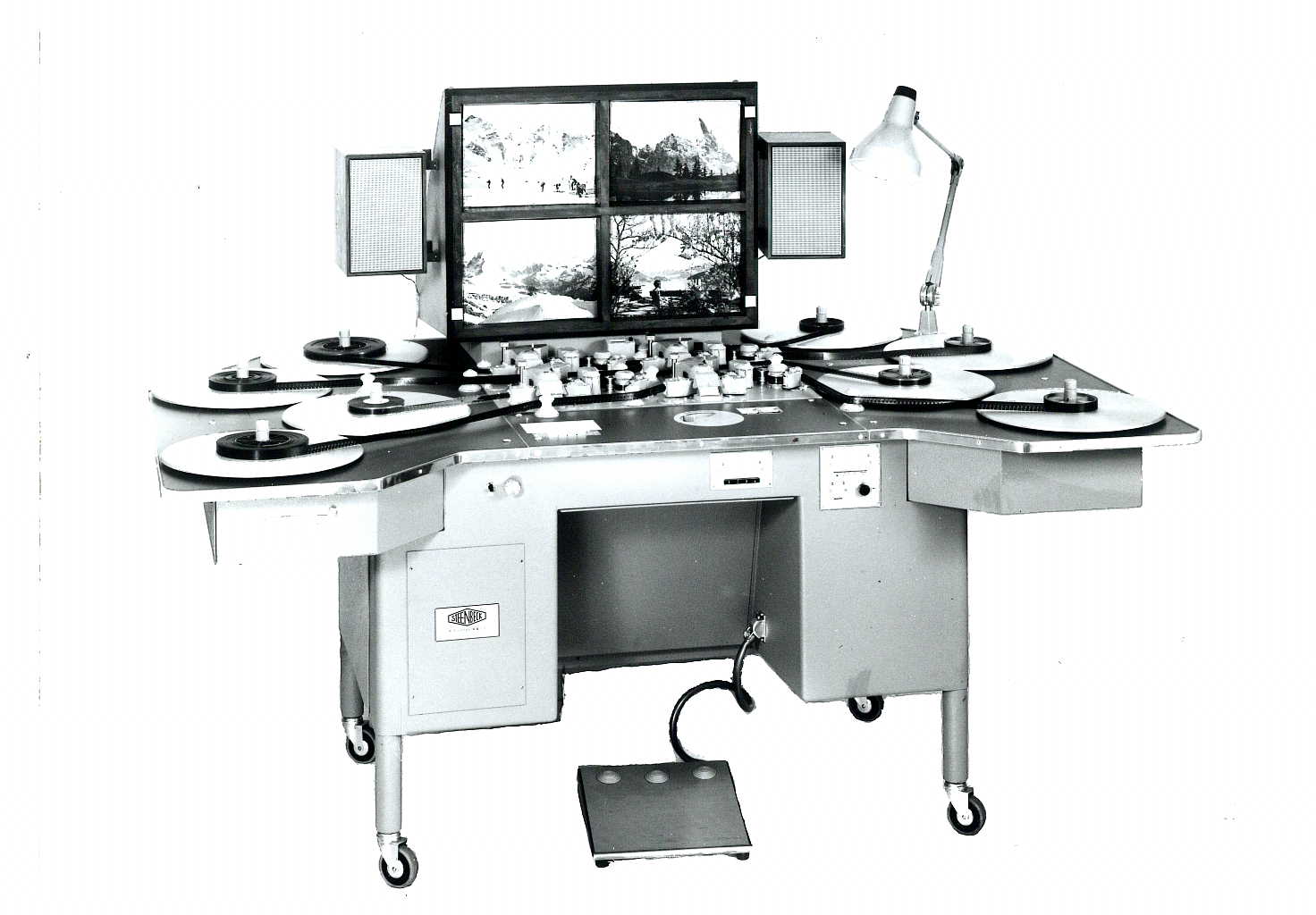 ANWAR: Cutting on film is pretty unforgiving to indecision; you just can’t make too many false cuts because it shows up when you replay. If there are too many joins you could always go to the expense of reprinting but working on news items which I did for a short time, the reversal stock used in the camera (both negative and positive) was also used to edit, and then transmitted, meaning you had to make the right decision the first time.
ANWAR: Cutting on film is pretty unforgiving to indecision; you just can’t make too many false cuts because it shows up when you replay. If there are too many joins you could always go to the expense of reprinting but working on news items which I did for a short time, the reversal stock used in the camera (both negative and positive) was also used to edit, and then transmitted, meaning you had to make the right decision the first time.
Also with news there were time constraints, a matter of an hour or two, to edit and mix and take to telecine for broadcast. I think working with film made you more disciplined and working in television, where schedules were short, made you quick. I do assemble quite quickly, but that is also down to my impatience with assembly. The worst part of editing for me is the drudgery of assembly. I do find that quite laborious. I can’t wait to get a scene assembled so I can start playing with it.
HULLFISH: You mentioned that you wanted to get that first assembly done quickly so you can get to the real work of fine-tuning the scene. How do you approach that? To work quickly, are you diving into the circled takes first or the last take or do you watch every frame before you cut anything at all?
ANWAR: With the digital technology that we have, directors are far less disciplined than they used to be. They just shoot a lot of material and everything is printed. It can be paralyzing when you’re faced with a lot of takes. So what I tend to do is to go for selected takes initially, (if there are several selected takes then I would use the last complete take). assemble the scene, block it out the way I think it should work. Then I’ll go back and go through the other takes (selected and unselected) for better performance or for other reasons. This might lead to altering the shape of the scene (and sometimes rebuilding), but it’s a quicker process than watching all the dailies before assembling.
HULLFISH: When did you make the switch from film to digital? And what’s been the back-and-forth between Lightworks and Avid?
https://www.youtube.com/watch?v=u5MjtnQUXBI
ANWAR: 1991 was the first time I edited digitally, on a TV film, Harnessing Peacocks. In the UK, there was only Lightworks, Avid hadn’t appeared there yet. There were frequent crashes and problems with not having enough storage space for the whole film. Consequently, once scenes had been cut they had to be consolidated with unused material being deleted to allow for new footage to be imported. If you needed to re-edit, that meant you needed to delete something else in order to re-import material for the re-edit.
I was resistant at first but that soon disappeared for me. I stayed on Lightworks for a while, but then went back to film for The Madness of King George (1994) which they wanted cut on film. It did seem archaic, going back to film. I went back and forth between film and digital several times until the last thing I cut on film was a short film with Danny Boyle called Alien Love Triangle. I think that was also his last edit on film too.
HULLFISH: Then once you were on digital, were you back and forth between Lightworks and Avid?
ANWAR: I tried to stay on Lightworks as long as I could. Then I had to go onto Avid when taking over from Chris Greenbury on American Beauty. It was quite a difficult process because I didn’t like the interface. The Lightworks controller is far superior to the Avid mouse. Editing functions are much simpler and quicker – sound editing more precise, I could go on and on. I bounced between the two until it was impossible to work on Lightworks in America.
There were only a half-dozen Lightworks machines in the States, and I think Thelma Schoonmaker has three of them.
HULLFISH: You’ve cut a bunch of stuff that has played with time: jumps forward or backward in time. Can you give me an example of why you’ve done that? Why was it necessary to break real-time?
ANWAR: In terms of the fantasy sequences in American Beauty, the jumping back and forth on Angela was very much designed by Sam Mendes. Lester replaying in his mind in total wonderment and lust was enhanced by repetition.
HULLFISH: I thought there was some in The King’s Speech.
ANWAR: There was some re-ordering in the montage sequences mainly because the fuller scenes as scripted were running long. The King visiting the factory was a stand-alone scene, the therapy sessions with Lionel similarly. By intercutting we could reduce the length and make them more entertaining. There were elements within the speechmaking in the factory which link back really well with the therapy session — like cutting from feet to feet, mouth to mouth and so on. So we found those moments which connect to make it cohesive and make it seem as though that’s the way it had been scripted. But as we all know, so much is changed afterward.
https://www.youtube.com/watch?v=7WJts0gKCRM
HULLFISH: Can you think of an example of a time when you cut back and forth between an A story and a B story where the transitions ended up different than the script?
ANWAR: On Revolutionary Road there were many flashbacks of April and Frank as children, then later their early romance. Surprisingly, their placement within the story was quite flexible and much time was spent on placing them in various parts of the edit. Sometimes a flashback was best triggered by scene A but then worked better after scene C or possibly, after some argument, before F.
Weeks would pass, then we would throw them up for grabs again until Sam Mendes decided he didn’t want them at all. He felt the thrust of their worsening relationship, April and Frank’s, was being hindered rather than being propelled by them. For Sam, getting to their decision to go to Paris needed to come quicker. Gradually, some of the flashbacks returned but not in their script order.
The beauty of editing is there are always surprises. In the script, you can’t see the possibilities; during shooting you can’t see them; in the first assembly you can’t see them. But as soon as you start to investigate what works and what doesn’t work, what’s redundant, what’s repetitive — you discover things which are unexpected and things which work much better in a new form than originally planned. For me that’s the most exciting part of the process – when you get to that stage.
HULLFISH: How have the relationships you built early in your career affected your later career — or lasted through your current work? The BBC was a real breeding ground for talent. Joe Walker came up through the BBC.
ANWAR Yes, that’s true. So many of my colleagues who left around the time I did are well established in the feature industry. The BBC was the best training ground or school on account of the variety of work and the quality of programmes, directors and producers… and the lack of interference.
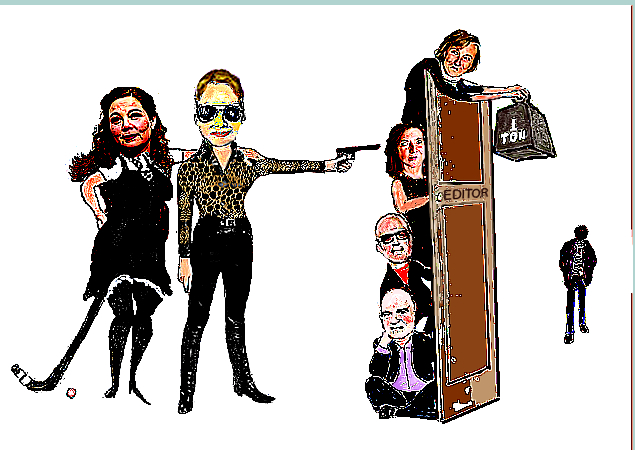
I’m sure all the editors who are now in features, that came from there — like Masahiro Hirakubo, Jon Gregory, Joe Walker, Mark Day, Robin Sales and many others — have come through that process where you would do a news item, then maybe a light entertainment show, then a drama series, a documentary on animals or a composer, a politician etc. All these things perhaps demand a different editing approach, but in the end, it’s about storytelling, and that is our craft. Being able to tell the story and getting the structure or narrative right — I think that is as important as the internal cutting of a scene.
In documentaries, the story is made in the cutting room and much of the storytelling is left to the editor. If you’re lucky you might get a paper treatment but invariably not. So the thinking process is invaluable in cutting a dramatic film and seeing the opportunities beyond the script. Perhaps apply documentary techniques like ignoring continuity, jump cutting, quick cutting etc.
The training at the BBC was fantastic. I think it’s really difficult now to move between the two, films and docs. We are all pigeon-holed: feature editor, TV editor, documentary editor, action editor, comedy editor, drama editor.
Going back to your question, in terms of relationships, very few of the producers/ directors I worked with at the BBC made it into the feature world. But I was lucky to be thrust onto Nick Hytner for The Madness of King George (the production had started without an editor), the success of the film giving me feature film credibility; then later with Sam Mendes, Iain Softley, Richard Eyre, Tom Hooper and others. No matter how good you are, you do need a good deal of fortune to build a career.
HULLFISH: How has post-production changed over the years?
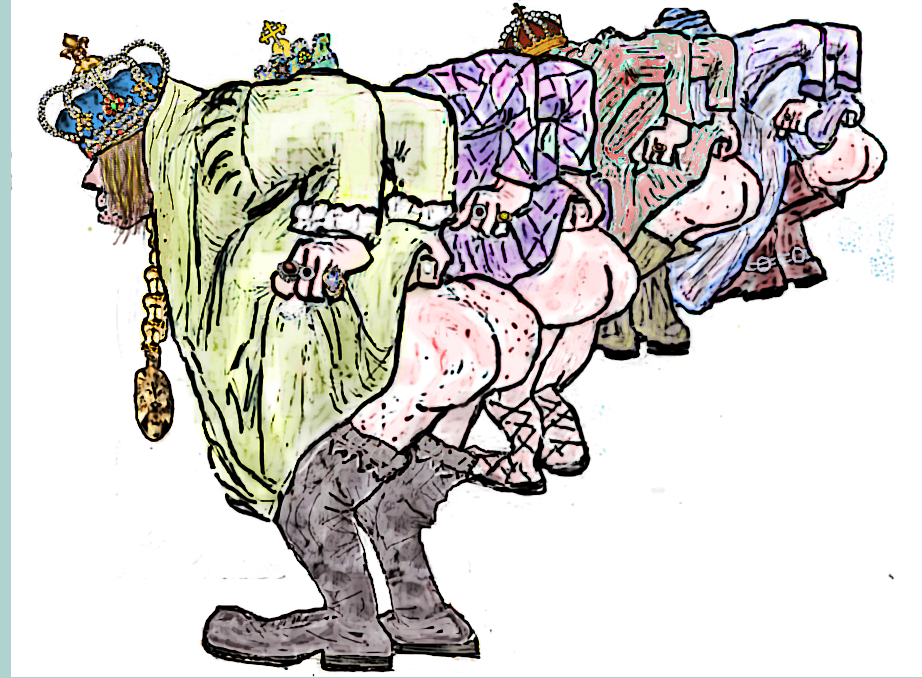
ANWAR: Post-production wasn’t so drawn out as it is now. Today, with all of the notes from producers, executive producers, studio heads and audience screenings, it is really hard, I think, to maintain an interest in a film because you become increasingly detached; the longer post-production goes on, the less the executives are going to hear your voice and you just become a button-pusher.
Finance today comes from many sources and each source has an opinion. An opinion which has to be considered even though perhaps not respected. Also, the digital age has brought with it an abundance of filmmakers. There’s no longer a mystique about the crafts; everyone can be a director, cameraman, editor. The filmmaking environment has changed since my BBC days and prior to that, when I was a free-lance feature film assistant.
HULLFISH: Have you ever discovered that bad producer notes and suggestions can lead to a good result?
ANWAR: Yes. Totally. You have to investigate all the notes. You have to go through the process, and if a note doesn’t work then illustrate why it doesn’t work. Sometimes the issue can be traced to another part of the film or sometimes to the script itself. In any event, by reworking and reworking, a gem might reveal itself. It’s such an evolutionary process. But you can also spend a lot of time going down blind alleys. And there’s always a threat that if you don’t come up with what they want, they’ll find someone else to also not come up with what they want.
HULLFISH: Do you do anything in your own career to foster the ability to move from one thing to another — between genres? To show that you can spread your wings and do other things?
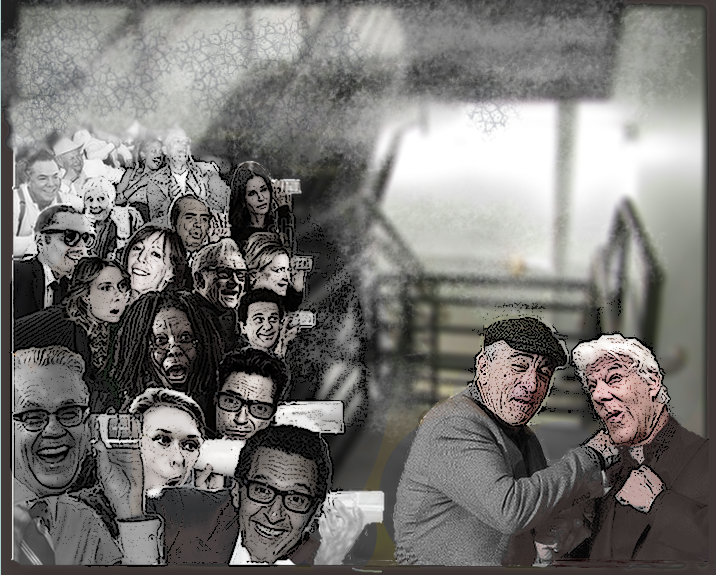
ANWAR: I would like to think a good editor can cut any genre of film. However it isn’t in our hands. Sam Mendes wanted me to cut Skyfall but Barbara Broccoli didn’t. I was too big a risk in her mind. But in her defence she was probably right. I often speed through interminable action sequences when watching on television, so I’m probably not an ideal choice. Equally, I have been sent some terrible comedy scripts which I have rejected, so perhaps I’m pigeon-holing myself.
Whatever genre, the script has to be appealing and then the director. The relationship with the director is so important. I’d rather work with directors I know, because then I know what to expect. I’m very wary of new directors and what they’re going to be like. My success rate at interviews is low and getting lower, currently dropping below 30%. I had an interview with Michael Mann about four years ago and Michael has a terrible reputation about being controlling and difficult in the cutting room. But I think his work is fantastic. So you have to weigh up will the rewards of working on a Michael Mann film outweigh the difficulties of working with him? Rather like Harvey Weinstein. I met Mann and found him totally charming. I did bring up my concerns, “Michael, over the last five or six years, you have had 3.5 editors per film.” However, I was seduced but unfortunately, or fortunately the film didn’t happen.
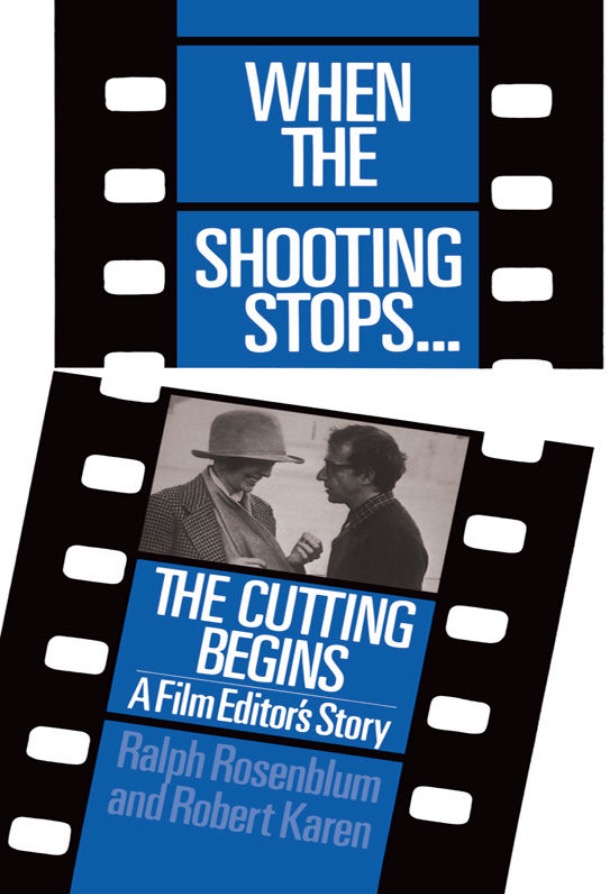
HULLFISH: Do you have any muses when it comes to editing? Books, films, music?
ANWAR: There have been some really good books on editing my favorite probably being Ralph Rosenblum’s, ‘When the Shooting Stops the Cutting Begins’ Regards film, so many. The films of David Lean, Coppola Ridley Scott, Hal Ashby, Norman Jewison, oh just too many. Music, largely blues, rhythm and blues, jazz and some classical.
HULLFISH: One of my early mistakes as an editor was that during the initial assembly, I chose to cut out lines from the script that I deemed were unnecessary, but I never showed the director what the scene looked like WITH the lines. That upset him. We put them back in and eventually they came back out, but there’s no way that the director could have “owned” that decision about cutting those lines unless I showed him his way first.
ANWAR: Well a few directors do like authorship of everything. Every good idea has to be theirs. It can be amusing when you offer an idea one day, then it comes back the next as the director’s idea. Then the response is “ Wow what a great idea!”
Regarding making text changes, it’s better to present one version as per script, then another how you think it works better. But it can backfire. In the book, I recount an experience on Mrs. Harris with a director called Phyllis Nagy. I called her in over a weekend to have a look at the work in progress. I was concerned because I thought the film wasn’t working as well as it could, and as they were still filming there was an opportunity to fix my perceived problems. I showed the film as she had intended and then my second version. She looked at me in silence then got up and walked out. I got a call an hour later from the producer calling me to the Headmistress’s office and I was fired.
https://www.youtube.com/watch?v=MrBmpxqOFg8
HULLFISH: Wow. I’ve done something similar with the director that I’ve worked with now four times. I show him the scripted way and I showed my alternative that I thought was better, and he just said, “Thanks. I like my way better.” And I said, “Great. If you’re happy, I’m happy.” With other scenes I might have pushed a little harder for my way, but I’ve also learned that most of the time, it’s better to wait to push harder. Sometimes the problem scene is dropped or altered anyway, and then you aren’t seen as the bad guy.
ANWAR: You have to have the courage to do those things. Good directors want to be challenged to see something different, even if they don’t agree. If you think something could be better, you have to have the courage to say so.
HULLFISH: When you are editing, do you immediately start to cut scenes into sequences? At what point do you decide to attach scene 2 to scene 3?
https://www.youtube.com/watch?v=nAsA8P0dom8
ANWAR: The dailies from the previous day’s shoot are usually cut by the evening or following morning. I have the scenes posted for the director to view and give me comments. Then, when I have time, I address his notes and send the revised cut with newly cut scenes. As the cut grows I send joined scenes too, so that by the end of the shoot, the assembly has already had input from the director.
HULLFISH: Do you have a favorite part of the process? You mentioned how much you hate the assembly. So then there’s the process of refining the scene, and eventually after the whole movie is assembled, there’s the work of refining the whole movie.
ANWAR: The period after assembly, when you start shaping, honing and finessing through the 10 weeks of the director’s cut, I think is fun. That enthusiasm gradually wains the deeper you go into post, although with the occasional exciting blip.
HULLFISH: Tell me about anything positive that you get out of test screenings. Do you go to them?
https://www.youtube.com/watch?v=5KqO11lJCs8
ANWAR: Yes, I do. Sitting with an audience is informative. You get a sense of where the film is dragging or when the audience is fully engaged. Beyond that, the focus groups and cards, that is usually painful. It’s a bit like being a target in target practice, particularly when questions of pace are negative. Focus groups assume the role of film critics with about the same technical knowledge as film critics.
HULLFISH: Do you try to get your ego out of the way in those instances? Or get it out of the way for producer notes?
ANWAR: I try to, but it’s difficult not to take things personally. You have to try to be constructive and offer solutions to negative comments. Directors are quite often beaten up by this process so it’s important to be supportive to them. So often, the problems that the audience feel are a consequence of the script. If things aren’t working, you can track those problems back to the script. Some of these problems can’t be fixed in editorial without re-shoots. This is where sometimes a new eye is brought in, because they say, “Well, YOU think there isn’t a way to fix this and WE think there is.”
Today, producers put problem films out to tender, sending cuts to several editors to compete for the privilege of re-cutting. The one with the most impressive ideas gets the job, the rest are usually left in ignorance of whether they have got the job or not.
HULLFISH: A final question about approach to material. When you are assembling a scene, are you going straight from the bins? Or do you use a KEM roll or selects roll?
ANWAR: I go straight to the bins, a separate bin for each scene. All the slates for slate one for instance, being grouped together with a gap to grouped slate two etc. My assistant having highlighted the selected takes with an asterisk. In documentaries I work from a KEM roll of say interviews and a KEM roll of general views etc.
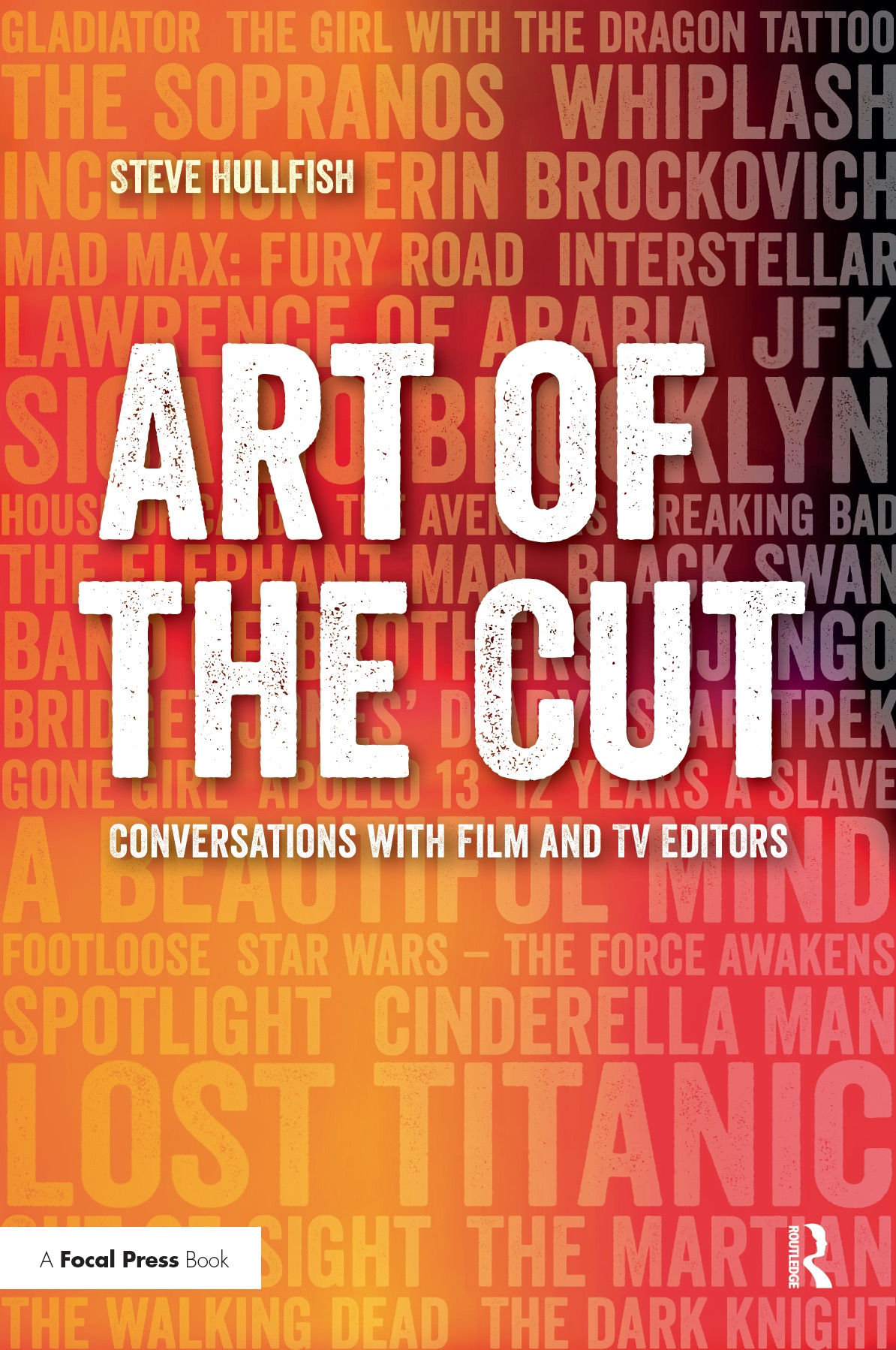 HULLFISH: Thank you so much for speaking with me today.
HULLFISH: Thank you so much for speaking with me today.
ANWAR: Thank you, I hope it’s been helpful.
To read more interviews in the Art of the Cut series, check out THIS LINK and follow me on Twitter @stevehullfish
The first 50 interviews in the series provided the material for the book, “Art of the Cut: Conversations with Film and TV Editors.” This is a unique book that breaks down interviews with many of the world’s best editors and organizes it into a virtual roundtable discussion centering on the topics editors care about. It is a powerful tool for experienced and aspiring editors alike. Cinemontage and CinemaEditor magazine both gave it rave reviews. No other book provides the breadth of opinion and experience. Combined, the editors featured in the book have edited for over 1,000 years on many of the most iconic, critically acclaimed and biggest box office hits in the history of cinema.

Filmtools
Filmmakers go-to destination for pre-production, production & post production equipment!
Shop Now